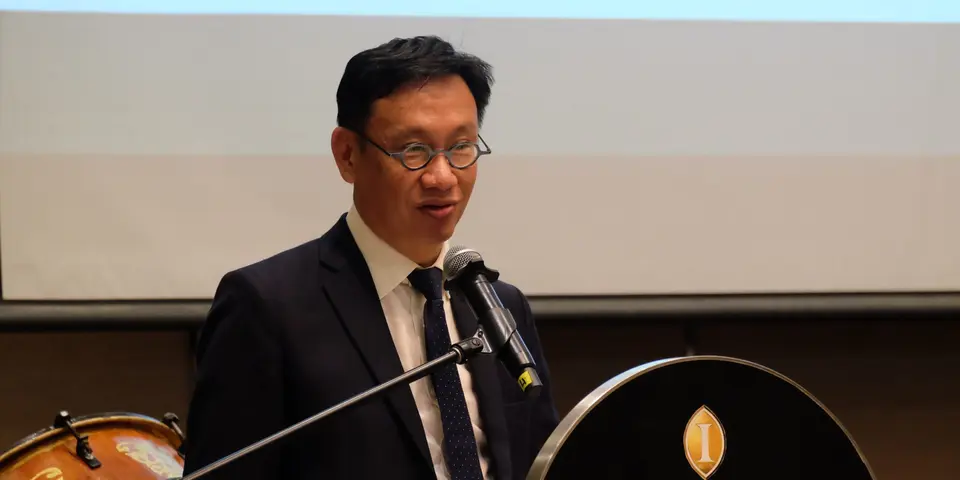
ASEAN must address crucial issues in its vision 2045
October 08, 2024

Kuala Lumpur, 8 October 2024 – ASEAN heads of state and government are gathering in Vientiane this week to mark the 44th and 45th ASEAN Summits. The ASEAN Summit is the highest decision-making body and presents a pivotal moment for ASEAN leaders to reflect and take bold action.
With the formulation of the ASEAN Community Vision 2045 on the horizon, the time is ripe for a bold reimagining of ASEAN’s role and capabilities in the ever-changing global arena. ASEAN envisions becoming a resilient, innovative, dynamic and people-centered community by 2045, which cannot become a reality without addressing the pressing internal challenges that have hindered the organization’s effectiveness and global relevance.
The criticisms faced by ASEAN for handling the Myanmar crisis, the unresolved South China Sea disputes, and the tepid response to the escalating United States-China conflict are not mere noise. These are symptomatic of deeper systemic issues within ASEAN’s institutional, decision-making and regional coordination capacities. It is time to confront the “elephant in the room” – ASEAN’s current inability to respond effectively to crises threatens its relevance.
ASEAN must embark on a path of substantial institutional reform to overcome this existential threat. Strengthening its institutions, enhancing decision-making mechanisms, ensuring agreement enforcement and promoting regional cooperation are non-negotiable steps toward sustaining ASEAN’s role as a key regional player in the global order.
Therefore, the following proposed measures for ASEAN’s institutional reform are timely and essential.
First, strengthening ASEAN’s institutional capacity. ASEAN possesses significant convening power and should leverage it to reinforce the importance of multilateralism in the region. There is a pressing need for ASEAN to enhance its institutional capacity and efficacy, requiring a thorough review of the ASEAN Charter and potential amendments as necessary.
Second, a coherent structure for conflict management must be developed. ASEAN must develop a more cohesive structure for conflict prevention, crisis management and conflict resolution to address internal issues such as the Myanmar crisis. ASEAN need not seek further than its past commitments. For example, the 2004 Vientiane Action Program 2005-2010 explicitly stated the importance of implementing “an early warning system based on existing procedures to prevent the development or escalation of conflict.”
Third, enhancing agreement-enforcement capabilities. ASEAN should strengthen its agreement-enforcement capability by establishing autonomous monitoring entities and mechanisms for resolving disputes. These entities would ensure that member states adhere to their commitments, focusing on environmental protection, labor rights and human rights.
Fourth, redefining the non-interference principle. The non-interference principle has long been a cornerstone of ASEAN’s identity but needs redefinition in response to contemporary challenges. One potential approach for ASEAN is to adopt a conditional non-interference stance, allowing the organization to intervene in cases involving severe human rights abuses, democratic regression or threats to regional security.
Another option for ASEAN to consider is a shift toward the responsibility to protect (R2P) framework. It would enable ASEAN to balance its commitment to sovereignty with the obligation to uphold fundamental human rights and regional security.
Fifth, establish formal channels for civil society participation. ASEAN should establish official mechanisms for civil society’s involvement in its governance processes, enhancing transparency, accountability and inclusivity. By integrating the viewpoints of civil society stakeholders in areas such as human rights protection, environmental protection and economic advancement, ASEAN can ensure that its policies are rooted in the concerns of its populace.
Over time, ASEAN should transition toward a more people-centric approach, empowering citizens to directly influence regional policies through forums, consultations and advisory bodies.
Sixth, leading in climate diplomacy as strategic moves to revitalize ASEAN from its current stagnation. ASEAN can lead in climate diplomacy by establishing regional frameworks for sustainable development and the transition to green energy. By bolstering environmental cooperation through more robust regional agreements on climate change, pollution control and renewable energy, ASEAN can effectively confront the urgent challenge of climate change and maintain its influence in global environmental governance.
It is important to acknowledge that enhancing ASEAN’s institutions is an essential but gradual process. The current development of the ASEAN Community Vision 2045, emphasizing resilience, innovation, dynamism and people-centeredness, provides an excellent opportunity to strategically incorporate structural reforms into the blueprint.
The upcoming adoption of the ASEAN Community Vision 2045 during the 46th Summit in Malaysia in the first quarter of 2025 marks a significant step forward. The ultimate aim is to empower ASEAN to become a more robust and agile regional organization by 2045, capable of effectively addressing global and regional challenges while upholding the human rights of its people.
Wong Chen, APHR Board Member and Malaysian MP.
•This Op-Ed first appeared in The Jakarta Post on 8 October 2024.
ASEAN Parliamentarians for Human Rights (APHR) was founded in June 2013 with the objective of promoting democracy and human rights across Southeast Asia. Our founding members include many of the region's most progressive Members of Parliament (MPs), with a proven track record of human rights advocacy work.